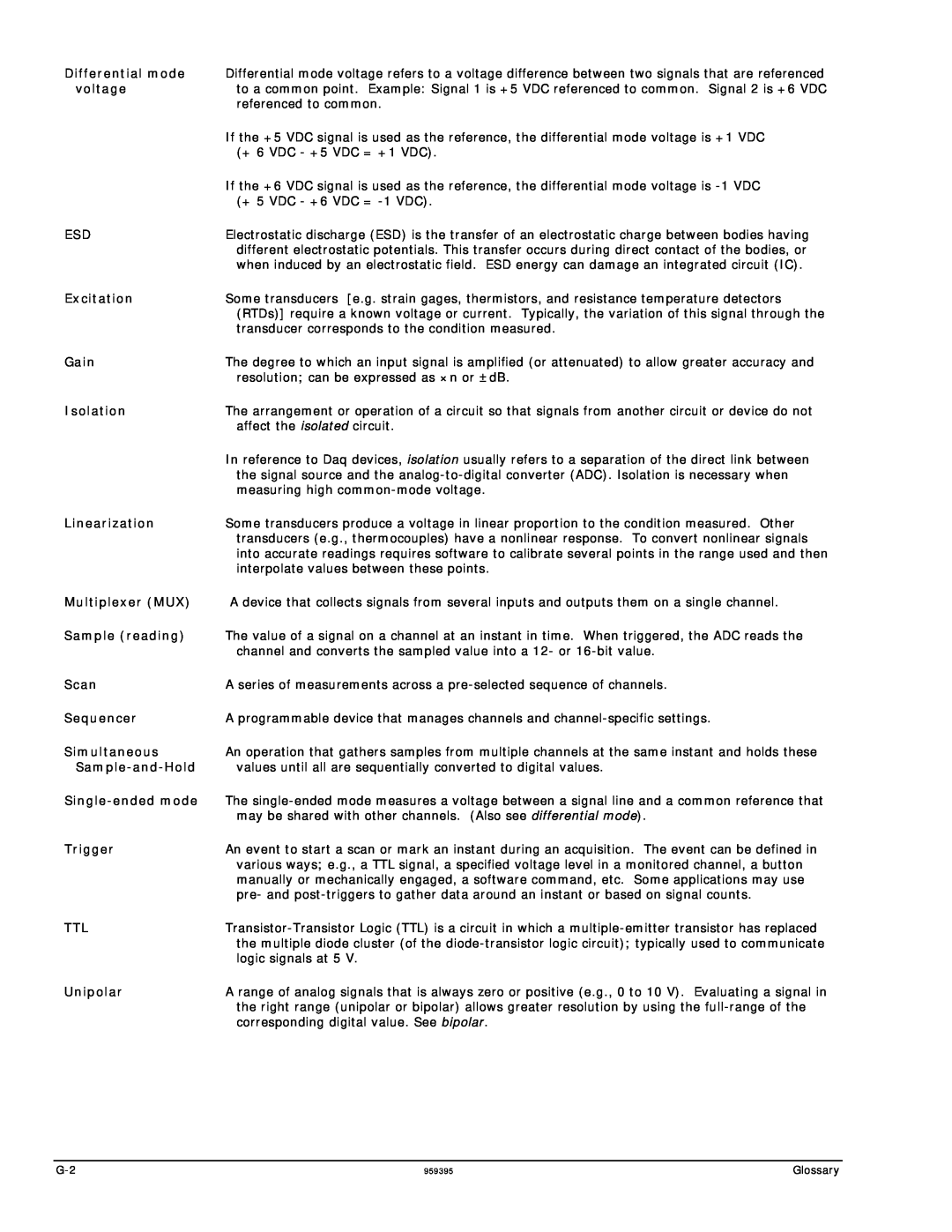Differential mode | Differential mode voltage refers to a voltage difference between two signals that are referenced |
voltage | to a common point. Example: Signal 1 is +5 VDC referenced to common. Signal 2 is +6 VDC |
| referenced to common. |
| If the +5 VDC signal is used as the reference, the differential mode voltage is +1 VDC |
| (+ 6 VDC - +5 VDC = +1 VDC). |
| If the +6 VDC signal is used as the reference, the differential mode voltage is |
| (+ 5 VDC - +6 VDC = |
ESD | Electrostatic discharge (ESD) is the transfer of an electrostatic charge between bodies having |
| different electrostatic potentials. This transfer occurs during direct contact of the bodies, or |
| when induced by an electrostatic field. ESD energy can damage an integrated circuit (IC). |
Excitation | Some transducers [e.g. strain gages, thermistors, and resistance temperature detectors |
| (RTDs)] require a known voltage or current. Typically, the variation of this signal through the |
| transducer corresponds to the condition measured. |
Gain | The degree to which an input signal is amplified (or attenuated) to allow greater accuracy and |
| resolution; can be expressed as ×n or ±dB. |
Isolation | The arrangement or operation of a circuit so that signals from another circuit or device do not |
| affect the isolated circuit. |
| In reference to Daq devices, isolation usually refers to a separation of the direct link between |
| the signal source and the |
| measuring high |
Linearization | Some transducers produce a voltage in linear proportion to the condition measured. Other |
| transducers (e.g., thermocouples) have a nonlinear response. To convert nonlinear signals |
| into accurate readings requires software to calibrate several points in the range used and then |
| interpolate values between these points. |
Multiplexer (MUX) | A device that collects signals from several inputs and outputs them on a single channel. |
Sample (reading) | The value of a signal on a channel at an instant in time. When triggered, the ADC reads the |
| channel and converts the sampled value into a 12- or |
Scan | A series of measurements across a |
Sequencer | A programmable device that manages channels and |
Simultaneous | An operation that gathers samples from multiple channels at the same instant and holds these |
values until all are sequentially converted to digital values. | |
The | |
| may be shared with other channels. (Also see differential mode). |
Trigger | An event to start a scan or mark an instant during an acquisition. The event can be defined in |
| various ways; e.g., a TTL signal, a specified voltage level in a monitored channel, a button |
| manually or mechanically engaged, a software command, etc. Some applications may use |
| pre- and |
TTL | |
| the multiple diode cluster (of the |
| logic signals at 5 V. |
Unipolar | A range of analog signals that is always zero or positive (e.g., 0 to 10 V). Evaluating a signal in |
| the right range (unipolar or bipolar) allows greater resolution by using the |
| corresponding digital value. See bipolar. |
959395 | Glossary |
